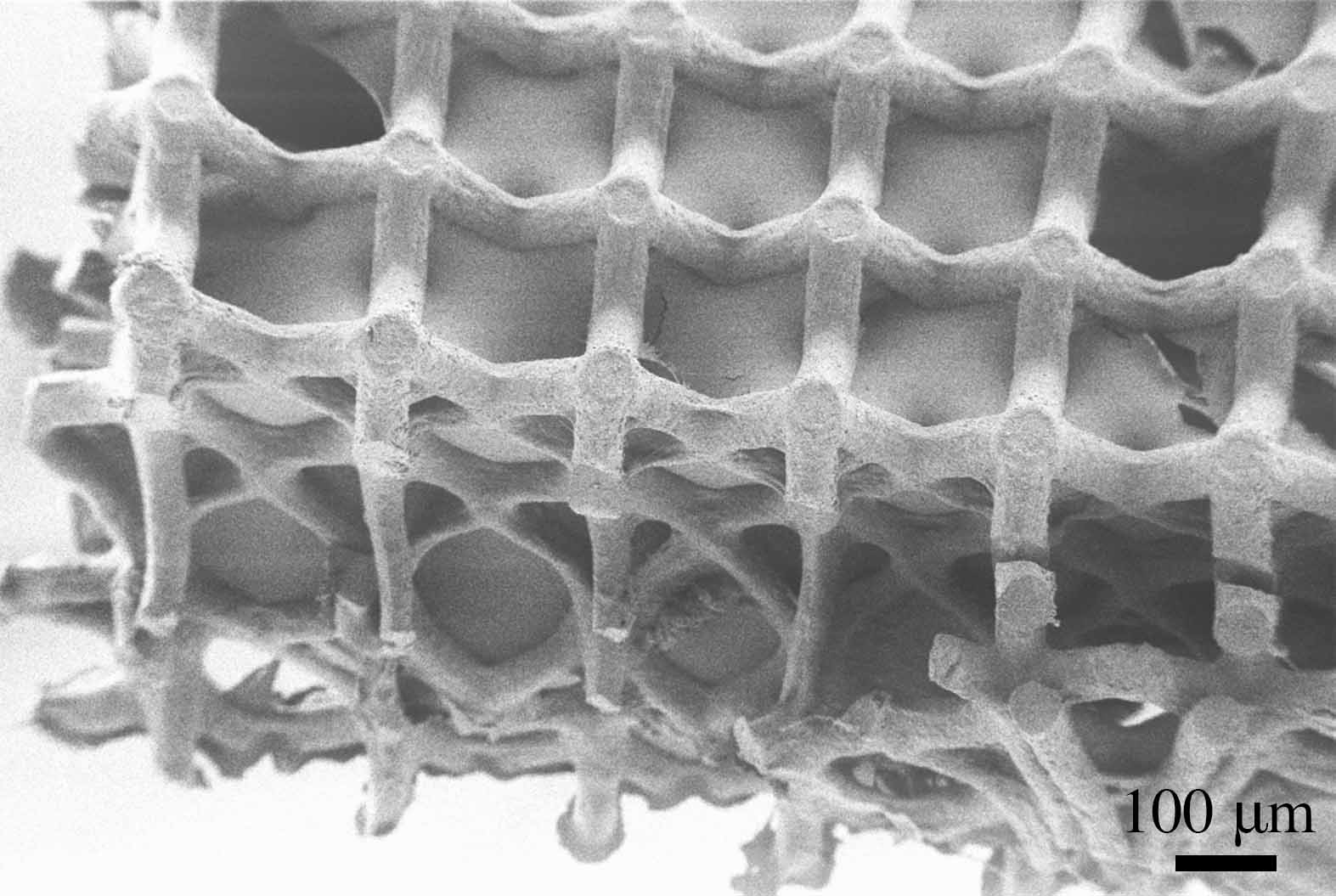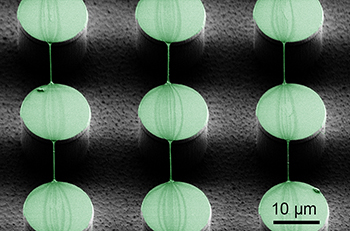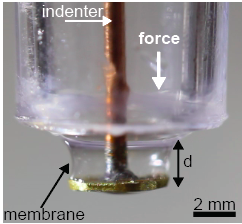Linnea Gustafsson
Om mig
Linnea is a guest reseracher at the school of electrical engineering and computer science and her research focuses on structuring spider silk proteins into various forms of silk (wires, sheets, coatings, membranes) and using these for medical applications.
Current Research
Microstructuring of Structuring Spider Silk
By manipulating droplets of soluble spider silk proteins on superhydrophobic surfaces it is possible to generate different forms of insoluble spider silk. This project higlhlights the formation of nanowires, micron sized coatings, and millimeter sized sheets. Using recombinantly prodcued spider silk proteins it is possible to functionalize all these strucutres to, for example, support cell growth or antibody detection.
A video highlighting the most recent results can be found here and more information about strucutring spider silk can be found here.
Spider Silk Nanomembranes
By letting a solution of recombinantly spider silk proteins stand undistrubed over night it is possible to form ultrastong nanometer-thin cm-sized membranes. This project focuses on forming, handling and characterizing these membranes. The membranes are also super flexible, as shown in the image, and can be stretched up to 220%. The biocompatible and biodegredable spider silk membrane are suitable for cell growth, opening up for applications within tissue engineering and organ-on-a-chip systems.
More information about the work can be found here and here.
Silk Tube Formation
 By submering a 3D-strucutre in soluble silk protein and letting the liquid evaporate it is possible to encapsualte the strucutre in insoluble spider silk. This project focuses on encapsulating three dimensional strucutres with spider silk functionalized to support cell growth, i.e. forrming tube like strucutres where the 3D-strucutre supports the thin silk film to generate a tubular strucute.
By submering a 3D-strucutre in soluble silk protein and letting the liquid evaporate it is possible to encapsualte the strucutre in insoluble spider silk. This project focuses on encapsulating three dimensional strucutres with spider silk functionalized to support cell growth, i.e. forrming tube like strucutres where the 3D-strucutre supports the thin silk film to generate a tubular strucute.
This work was presented at the The 31st IEEE International Conference on Micro Electro Mechanical Systems (MEMS2018).
____________________________________________________________________________
Short CV
Linnea received her a B. Sc in physics, with minors in mathematics and business administration, from Fort Hays State University (USA) in 2013. She was involved in an undergraduate research project focusing on modeling the movement of charged particles in solutions. In 2012 she participated in a undergraduate summer exchange at the Univeristy of Nebraska-Lincoln University of Nebraska - Lincoln (USA) and conducted research focused on generating charged surface plasmons.
In 2015 Linnea received her M. Sc in Nanotechnology from the Royal Institute of Technology (KTH) (Sweden). During her education she did an internship at the Swedish Medical Nanoscience Center at Karolinska Institute (Sweden) where her research focued on investigating biofilm growth on various surfces. She did her master thesis at the department of Micro and Nanosystems (MST) at KTH and the work focused on the development of a novel blood plasma filter using an OSTE emulsion. In 2020 Linnea finished her doctoral studies at the same department by succesuflly defending her thesis "Spider Silk Nanostructuring and it's Applications for Tissue Engineering"
____________________________________________________________________________
Teaching
EK1190 Mätteknik 7.5 credits (HT 2015/2016/2017/2018)
____________________________________________________________________________
Keywords: spider silk, recombinantly produced, antibacterial, superhydrophobic surfaces, OSTE, tissue engineering, artificial blood vessels, microfluidics, microsystems, biomaterials, biomedical

